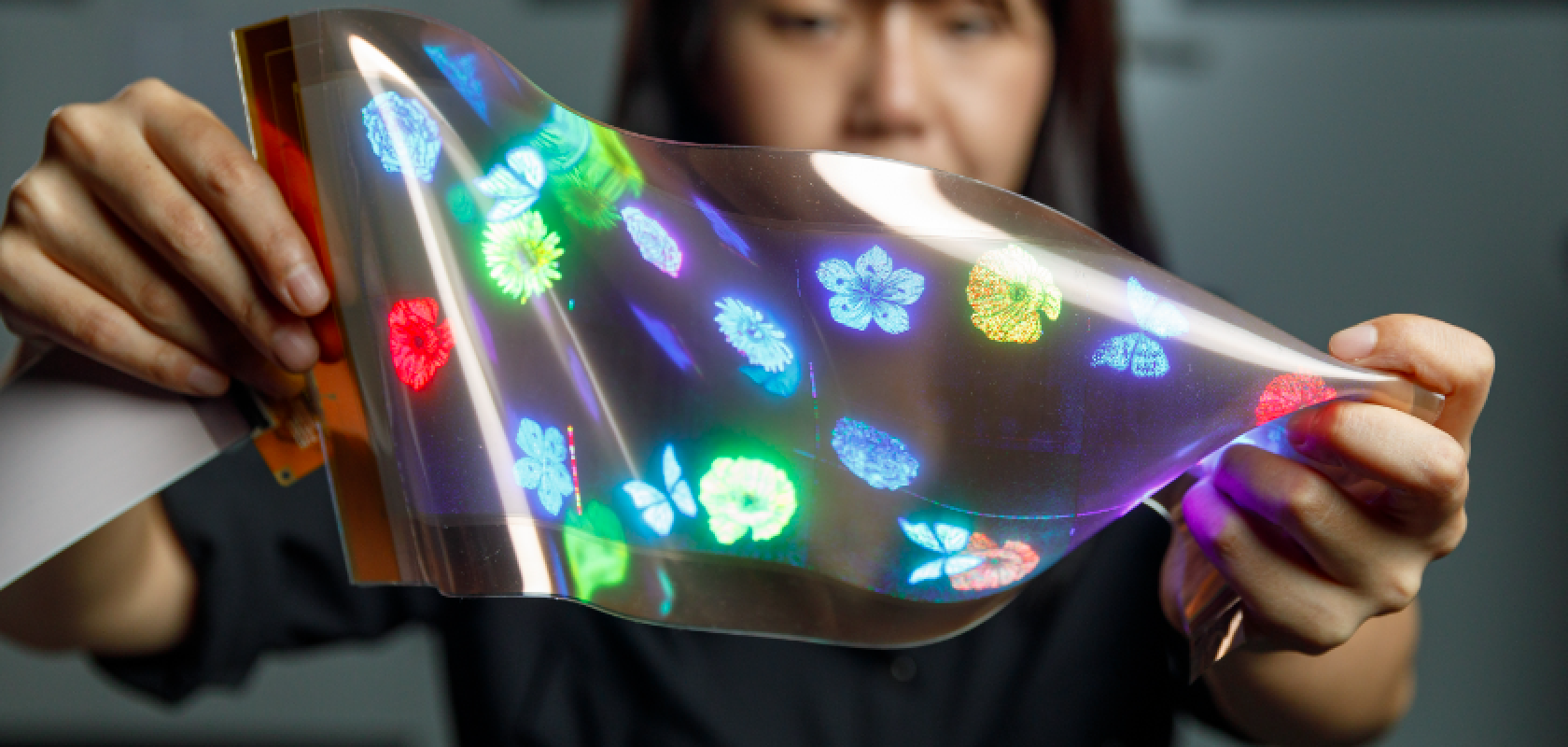A team of researchers from Hanyang University in South Korea have discovered that transparent radiative cooling metamaterials with a thickness of 50 microns are able to act as a cover for foldable and flexible displays as often used by consumers.
As reported in Nature, the transparent radiative cooling cover provides strong light emission in the atmospheric window under the secured optical transparency, while also offering enhanced mechanical and moisture-impermeable properties that meet the demands of target applications.
Comments from the researchers in the paper state that: “Our metamaterials not only substantially mitigate the temperature rise in heat-generating devices exposed to solar irradiance, but also enhance the thermal management of devices in dark conditions. The light output performance of light-emitting diodes in displays on which the metamaterials are deployed is greatly enhanced by suppressing the performance deterioration associated with thermalisation.”
Developing a cover to meet flexible display demands
The demand for such covers has arisen from the advent of high-performance foldable displays. The outermost layer of these displays require flexible displays, in comparison to conventional rigid cover glass.
Such covers also require specific characteristics, the researchers say, including: “Optimal optical properties for precise image delivery, robust mechanical properties for display protection from mechanical damage, and moisture-impermeable properties to protect the underlying devices from high humidity.”
Beyond these characteristics, high-performance electronic devices with such displays require effective heat dissipation of internal devices to secure their lifetime. However, as these devices are used in both indoor and outdoor environments, challenges in the application of conventional thermal management methods arise from internal devices and external solar irradiance.
Addressing challenges with radiative cooling proposals
To address such challenges and create a useable cover, the researchers sought to harness radiative cooling, a promising passive cooling technology that can dissipate heat to outer space through the atmospheric window just 8–13 μm thick with no additional energy input.
Using c-PI, a promising material, because of its excellent optical and mechanical properties and moisture impermeability, the researchers put the radiative cooling approach to the test. They also exclaimed how they could optically modulate the microstructures to improve performance.
The work of the researchers revealed that the synthesised transparent radiative cooling metamaterials exhibit a high visible transmission of 85.5% in the 400–800 nm wavelengths with a controlled haze from 25% to 64%. The synthesised 50 μm thick metamaterials were also found to significantly increase the light emission of c-PI from 60.2% to 94.6% in the atmospheric window, effectively suppressing the temperature rise of the displays in both outdoor and indoor environments.
Reflecting on the results, the researchers state in the paper: “The metamaterials not only substantially mitigate the temperature rise in heat-generating devices exposed to solar irradiance, but also enhance the thermal management of devices in dark conditions. The light output performance of light-emitting diodes in displays on which the metamaterials are deployed is greatly enhanced by suppressing the performance.”
Ultimately, these findings show how metamaterial films can successfully decrease the temperature rises in devices with flexible and foldable displays.
Lead image: PC Gamer


